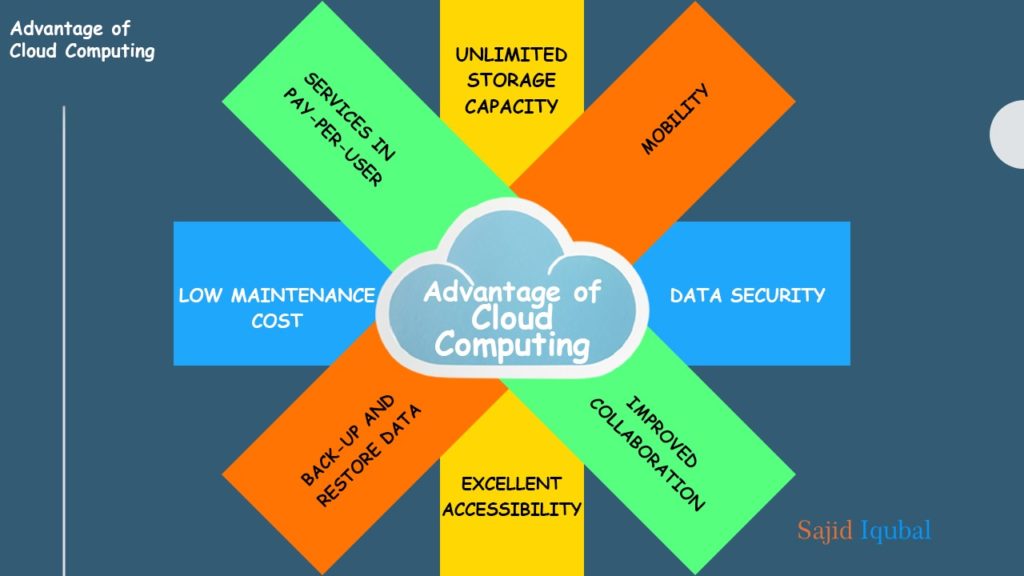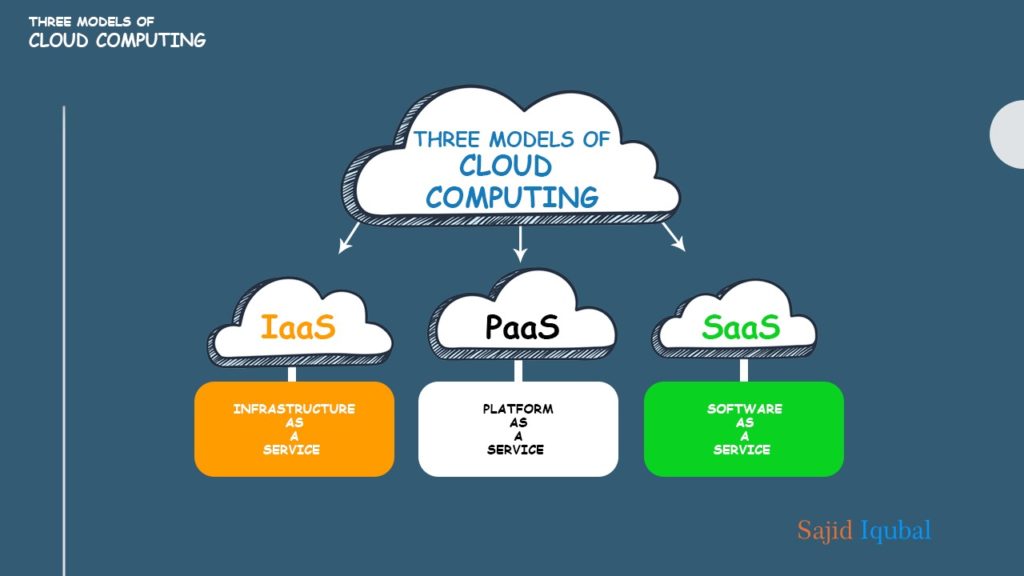In very simple terms cloud computing is the process in which on-demand computing services are delivered over the internet. Such services may include storage, applications, processing power, and other such things. These services are delivered on a “pay as you go” basis and everything is done over the internet. This means that various companies do not need to own a data center or even a computing infrastructure of their own. They can just get access to storage, applications, or anything else on rent from one of the many cloud service providers.
This means that various firms and companies need not have the upfront cost of having their own and even maintaining that IT infrastructure. They can save money as well as rid themselves of the complexity of the management needed by an IT infrastructure. With cloud computing, they just need to pay for whatever they use and only pay on times when they are using its services. Even various cloud service providers are able to provide a number of clients with the same services at the same time.
There are vast and varied options that are now provided by various cloud computing service providers. You can get just the basic package which should include services like networking, processing power, storage, or advanced services like artificial intelligence, office applications as well as natural language processing. So basically you can get any service from the cloud which does not need you to be in close physical proximity to the hardware of the computer.
Wait! What Are Its Examples?
A number of services come under cloud computing services which include email services like Gmail or the cloud on which you back up your photos to or the services with which a huge company hosts its data and databases and runs various applications. A company like Netflix uses cloud computing for its video streaming services, data management services, and even its storage services. A number of apps are using cloud computing as their default option setting. But it is also to be remembered that cloud computing may introduce some new expenses and risks for people and firms who are using it.
Its History Marks A Difference!
The term cloud computing has been all around the world since the early 2000s. But it is important to remember that this concept of providing computing service has been in the world for a long time now. Even in the 1960s, various bureaus of computers allowed different companies to have some time on its mainframe on rent. Even back then this service allowed various firms and companies do not necessarily have to buy a mainframe of their own.
The rise of personal computers or the PC overtook such various “time-sharing” services of the old times. Personal computers made owning and maintaining computers more affordable. A rise in various data centers of many corporate companies where they used to store huge amounts of databases and data also aided this decline of “time-sharing services”.
But even then this process of getting access to rent kept on resurfacing from time to time in the late 1990s to the early 2000s in the form of utility computing, application service providers, and grid computing. Cloud computing is what followed in those footsteps and used its software to hold an important position in today’s world.
World is in Dire Need of Cloud Computing
According to research by IDC, the expense of building the infrastructure and things needed by cloud computing for support is even more than one-third of all of IT expenses in the entire world. As cloud computing gains popularity the expenditure on in-house IT which is traditional is on a path of decline. The major bulk and load are on the cloud computing services and this is what is leading to a decrease in the expenditure on and the number of in-house IT’s all around the world.
In a prediction, 451 Research says that this one-third spending on building cloud computing infrastructure is “indicating a growing reliance on external sources of infrastructure, application, management and security services.” A prediction by Garter, an analyst suggests that by 2021 half of the people and firms using some services of cloud computing right now will totally move towards it. According to his research, the expenditure on cloud computing services and infrastructure will soon be around $260bn. This is an ever-growing place and is increasing at an unexpectedly fast rate.
However, it still remains unclear how much of this demand and popularity is from firms who in reality want to fully move to cloud computing.
Infrastructure-as-a-Service and What It Entails-
There are three models of cloud computing that we can break cloud computing into. Infrastructure-as-a-Service or IaaS is one of those three models. It refers to or is the building block that is fundamental to cloud computing. It can be easily accessed on rent by companies as networking, storage, or virtual or physical servers. Infrastructure-as-a-Service is a model that attracts a number of those firms who would like to build and develop their own various applications from scratch. These companies can also have all the major and elemental controls with themselves only. However, Infrastructure-as-a-Service does need and ask companies and their employees to possess certain technical skills so that they are able to perform those services at that level.
There exists research by Oracle that says through its findings that two-thirds of the users who use Infrastructure-as-a-Service have said that online cloud computing has made it easier for them to bring about new innovations and even enabled them to save time in which they can now deploy various new services and applications. They have also admitted to having had a significant cut in their maintenance costs. The other half said that they felt and considered Infrastructure-as-a-Service as not being a secure enough option for their most private and critical data.
Platform-as-a-service and what it entails?
Platform-as-a-Service or PaaS can also be called the “next layer up”. It includes networking services, underlying storage, virtual servers, and even various tools and software needed by developers in order to build various different applications. It also includes operating systems, middleware, development tools, and database management too.
Software-as-a-Service and what does it entail-
Software-as-a-Service or SaaS is the last model which includes applications-as-a-service and its delivery as a model of cloud computing that is used to by most people in their daily lives and also the model that people are used to encountering in their daily lives. In Software-as-a-Service the operating system and even the underlying hardware system holds no relevance or significance to the user at the end of it, the user who will have the access to the service through an app or a web browser. This service is most often provided on the basis of per-use and per-seat.

Software-as-a-Service is the dominant of all three cloud computing models and is predicted to remain so. For Software-as-a-Service the expenditure entails system infrastructure software and applications and its purchases.
The Advantages Are Superb!
When talking about the advantages of cloud computing and the benefits one can get from it, it must be noted and remembered that the exact advantages will keep changing and differentiate depending on the type or even the model of the cloud computing service that is being used. However certain fundamental advantages will remain the same for all the firms and people using cloud computing.
Any firm or person who uses cloud computing will not have to buy, build, or maintain their own computing or IT infrastructure. They will not have to spend their money on purchasing a server or many of them, updating their operating systems or applications that they use and they won’t even have to dispose and get rid of any outdated software or hardware. All of the above things are looked after by their cloud computing service provider.
A cloud computing service provider is also better and makes much sense for various applications of a commodity like email services. Cloud computing service providers will be able to provide you with a more secure, efficient, fast, and reliable service rather than having one’s own employees do those things. This is because a cloud computing service provider will have apt knowledge and will be a specialist in securing these services and running them efficiently than your own staff.
Final Words
With cloud computing services it is made possible for various companies to work faster and more efficiently on various projects because they are now able to test our various new concepts and experiment without having to ever worry about the huge upfront costs and the long wait for its procurement. With cloud computing, your company will only have to pay for the services they use and only when they use them. Cloud computing makes it possible for new services to spin up and come into life without spending any time, effort, or money that a traditional IT infrastructure will ask you for. It is also to be remembered that with cloud computing you will be able to scale up your new application quickly and efficiently if it becomes popular and in demand.
Cloud computing is fast, it’s efficient, cuts down major costs, and is more secure and more and more businesses are leaning towards and becoming dependent on its services as time progresses.
